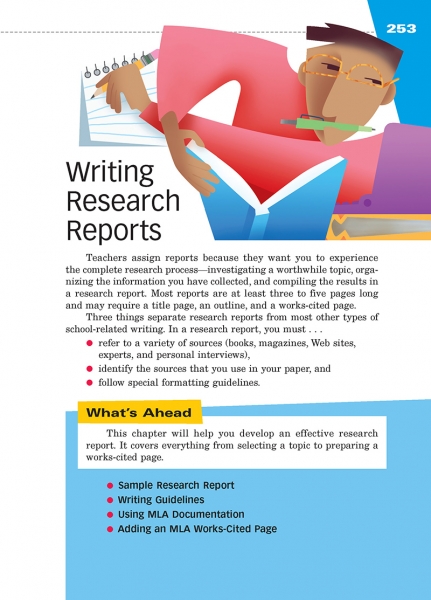Page 253 from

Start-Up Activity
Ask students if they ever had to find something in the dark. Ask what they were trying to find, and have them explain the process they used to find it. Were they successful? Why or why not?
Then tell students that research is just the same process: looking for something in the dark. Whether the researcher is looking for a specific something or for "whatever," the person must shine light in dark places and sort through what's there. Let your students know that the root of research is search, which is the heart of a successful paper.
Think About It
“Research is formalized curiosity. It is poking and prying with a purpose.”
—Zora Neale Hurston

Start-Up Activity
Ask students if they ever had to find something in the dark. Ask what they were trying to find, and have them explain the process they used to find it. Were they successful? Why or why not?
Then tell students that research is just the same process: looking for something in the dark. Whether the researcher is looking for a specific something or for "whatever," the person must shine light in dark places and sort through what's there. Let your students know that the root of research is search, which is the heart of a successful paper.
Think About It
“Research is formalized curiosity. It is poking and prying with a purpose.”
—Zora Neale Hurston